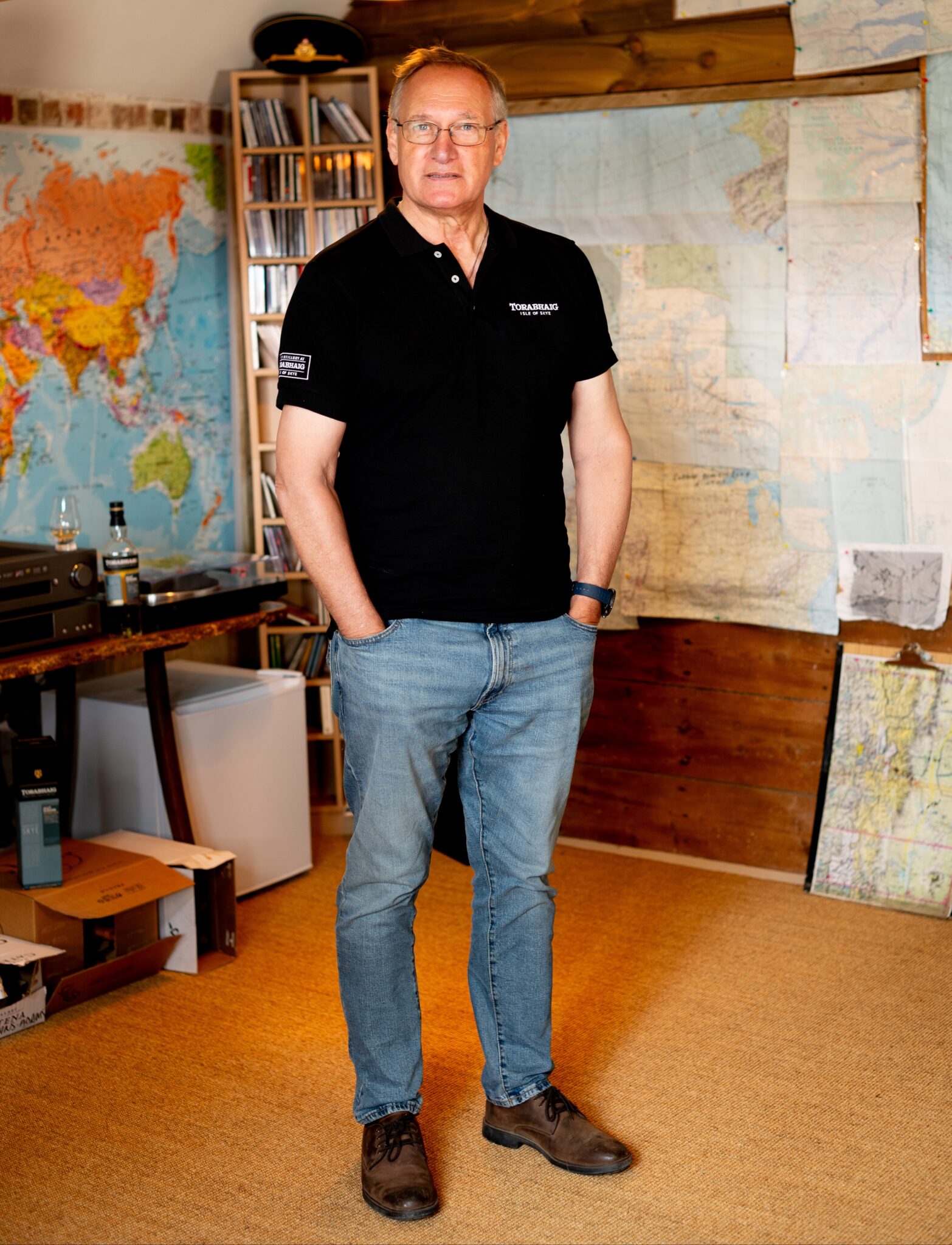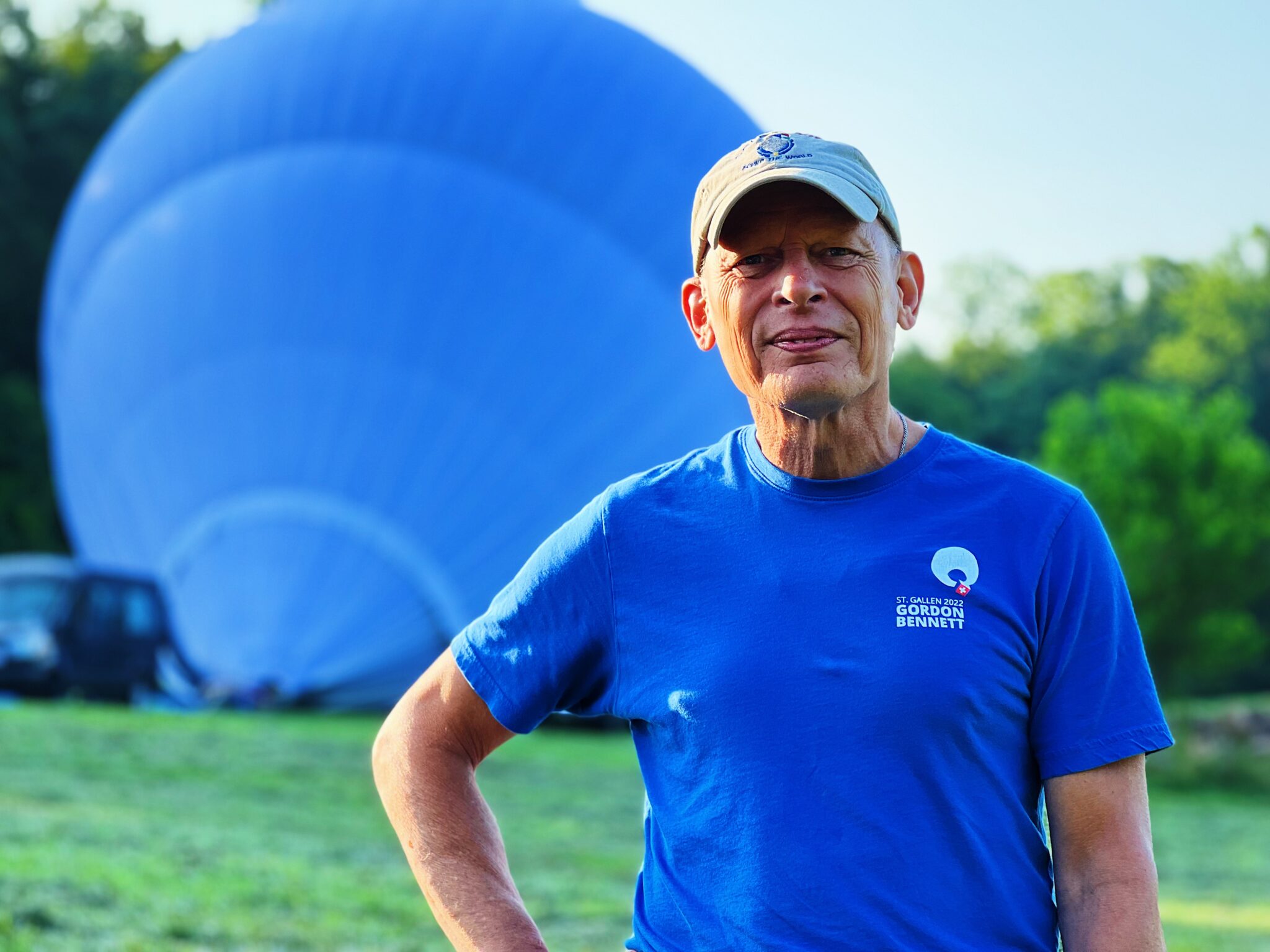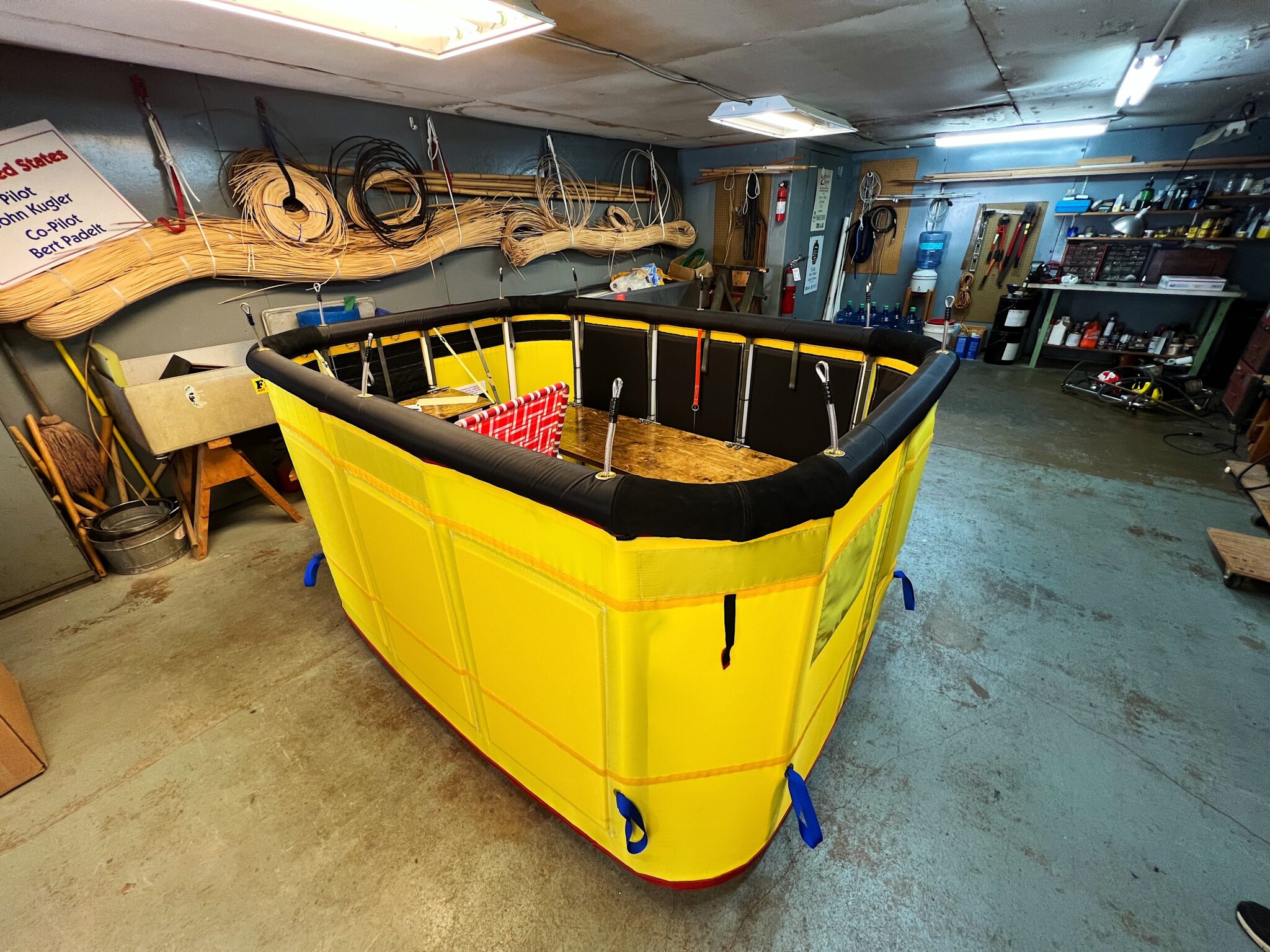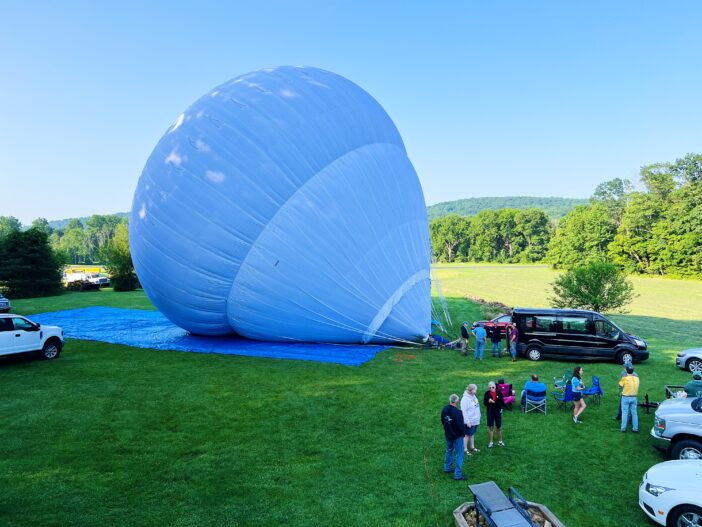In an insightful interview with Sitara Maruf, illustrious British explorer, aviator, and trailblazer, Sir David Hempleman-Adams, emphasized the invaluable role played by dedicated teams throughout his endeavors and offered his unique perspective on the world of exploration. Beyond his adventures, he passionately discussed his philanthropic initiatives and the guidance he imparts to young enthusiasts, inspiring the next generation of explorers.

As we prepare to share this interview, it’s worth noting that Sir David is on the brink of embarking on yet another daring escapade: copiloting a hydrogen balloon across the vast expanse of the Atlantic Ocean from an open basket with renowned US balloon manufacturer and balloonist, Bert Padelt. Accomplished Swiss explorer and scientist, Dr. Frederik Paulsen will also join them on the flight. Let’s not forget that the take off depends on a suitable weather system both at the launch site in Presque Isle, Maine, United States, and throughout the vast Atlantic Ocean.
In the interview below, Sir David provides a captivating glimpse into the upcoming journey with moments of lighthearted humor that illustrate his engaging personality.
Sitara Maruf: All your ballooning achievements and other explorations are truly awe-inspiring. Congratulations.
Sir David Hempleman-Adams: Well, I’ve been lucky, very lucky! You always need a very good team around you. On all my balloon trips, I’ve been lucky with help from people, but, you know, I think sometimes people don’t realize how well they’re respected in other countries. So, Bert Padelt, who I’m flying with on the Atlantic flight is quite unique in the world, in that he knows the technical side of a balloon and has several skills. He, from a very young age, had this love of aviation, and he got into building balloons. He thinks it through, and then he builds the balloon. It’s like when you see a craftsman working on a work of art, and they’re engrossed in it, and they love producing something of quality and beauty.
And when you see his products, be it a basket or the balloon; it is done with love and perfection. He’s an aeronautical engineer and he is a unique craftsman; he never copies anyone else. He has his own ideas and then he builds it. But on top of that, he flies it. And that’s very unique. So, in the UK and Europe, if you ask people in Switzerland or Belgium or Germany, who’s the best, they all come back with Bert Padelt.
Sitara Maruf: Yes. He’s very respected as a balloon manufacturer and as a balloonist.
Sir David Hempleman-Adams: So, for my trip, I feel very humbled and very honored that I can fly with Bert Padelt. He’s a great and fantastic pilot, so I feel very safe, and it is going to be great fun flying with him.

Sitara Maruf: I understand you had some great ballooning journeys on Bert Padelt’s balloons.
Sir David Hempleman-Adams: Yeah, all my ballooning records are purely down to him. This is where he’s very good. Before you take off, he will go for a coffee with you and he will sit you down and he will say, this is what’s going to happen to the balloon the first five minutes, and this is what’s going to happen around you. This is the weather that you’ve got and you’re going to be going at this speed, at this height, so, you’ve got to be careful. And when I went very, very high on altitude, he said, you’re going to go up and then you’re going to slow down, and then this is going to happen. And I’m talking about, you know, 40,000 feet up. And every time, he talks with knowledge and experience, so you listen, and every time he’s smack on the money. He thinks it through, and he flies the flight for you. And that’s what gives you the confidence to go out and do it.
Sitara Maruf: So, what was the motivation behind your decision to attempt another trans-Atlantic crossing? Why is this expedition so significant to you?
Sir David Hempleman-Adams: Well, I think two or three reasons. One, I’m slowing down now and a friend of mine, Frederik Paulsen, who’s from Switzerland, has always talked to me about the Atlantic, and Bert was talking about the Atlantic, and he wanted to do the Atlantic. So, I just I thought it’d be one last and great big ballooning journey for me. And it’d be nice to do with a great friend like Bert, because when you do these things in the competition, there’s the stress of the competition. And you’ve got to take off with whatever the weather gives you. You’re always looking at the other balloons. And on solo trips, like some that I have done, you don’t get much sleep, so you don’t enjoy it, until you finish; whereas, when you’ve got a really good, competent pilot like Bert, you can alternate the flying and that way you can get some good quality sleep, and enjoy the journey and the experience a lot, lot, lot more. Bert and I were always good friends, so, I’m hoping to start off as good friends and return as brothers after the finished flight!
Sitara Maruf: That’s great. When you flew solo to the North Pole, was it a helium balloon?
Sir David Hempleman-Adams: Yes, it was. Also, I’ve flown two helium balloons across the Atlantic, but this will be the first hydrogen balloon.
[Details of the balloons and the flights to the North Pole and across the Atlantic, appear in the accompanying article.]
Sitara Maruf: Now, as we know that hydrogen balloons have some specific safety concerns due to the flammable nature of hydrogen gas. So, flying a hydrogen balloon would be a different experience?
Sir David Hempleman-Adams: Yeah, Yeah, so, I’ve had to stop Bert from smoking cigars…
Sitara Maruf: [Bursting into laughter] Okay, but not whiskey? Whiskey is okay?
Sir David Hempleman-Adams: Yeah. Yeah, whiskey’s okay. So, we’ll take the whiskey, but we’ve got to keep the cigars behind.
[The Atlantic ballooning endeavor is sponsored by Torabhaig Single Malt Whisky, which is owned by their Swiss flight companion Dr. Frederik Paulsen.]

Sitara Maruf: Let us move on to other supplies and provisions like food, water, and other essentials during the journey.
Sir David Hempleman-Adams: With this balloon, it’s very simple. Your ballast is sand. There’s no propane, there’s no heater, because it’s hydrogen. Sand, food, water, and everything is ballast. So, if for any reason, we get short on sand, we just throw over a can of baked beans―making sure there’s no one down below.

Sitara Maruf: Obviously, there won’t be any cooking? All food will be packaged?
Sir David Hempleman-Adams: No, no, no. It’s like camping in the sky, I’m the cook. So yeah. I will be cooking and heating up baked beans for Bert, while he’s flying the balloon. Hot food and hot drinks are very important. But, of course, you’re asking the right question ’cause you’re a scientist. You don’t want any naked flame or anything like that, for obvious reasons. So, we will close the balloon, to make sure there’s no contamination whatsoever. And it’s like a tent, so you can roll down the tent. We will be extra careful when we’ve got the little cooking stove in the bottom of the basket. So, I’ll be responsible for that.
Sitara Maruf: And you’ll be taking turns sleeping.
Sir David Hempleman-Adams: Yeah, yeah. Just on the floor.
Sitara Maruf: In 2000, when you embarked on this solo balloon journey to the North Pole, it seems impossible for any time. And the only example that you had in front of you was the long suffering and tragic end of Solomon Andree’s balloon expedition in 1897. And, like them, you also used an open gondola to reach the North Pole. So, what were the unique challenges and emotions that you felt on that historic journey?
Sir David Hempleman-Adams: Well, since 1897, no one had tried it. And nowadays we have better weather forecasting, but all the meteorologists around the world said it wasn’t possible, because the weather systems across the Atlantic are very different to the ones up on the Arctic Ocean. So, I just thought, well, why not try? You know, you might fail, but try, and that’s exactly what happened. So, I was very, very lucky. I had the right weatherman.
You know, the pilot is just a monkey. He just does up and down. If you feed the monkey a banana, he’s as happy as Larry, whereas the meteorologist is the clever man. He’s the guy who says, you have to take off on this day at this time, and you have to go in this direction for 10 hours, and then I want you to do this for 12 hours, and then I want you to do that for six hours. So, he’s the man who’s actually looking at what’s going on in the sky, like a big chess game. And so, he’s the genius. And we had a fantastic genius in Luc Trullemans, and that’s how I got to the North Pole and back.
But conversely, also, when you look at this Atlantic trip, we got two great people. We’ve got Bert Padelt, who’s built the balloon, and he’s fantastic, but we’ve also got a very good weatherman as well. So, he’s looking with Bert to go across. And, you know, I’m very lucky. I’ll get the call, I will fly from England into Boston, drive up to Presque Isle, Maine (the launch site). The balloon will be up and ready. I’ll get in the basket, even in my pajamas, and off I go.

Sitara Maruf: But these long duration balloon flights, like going to the North Pole, or crossing the oceans, are a test of your endurance and patience. It involves many death-defying moments. How do you mentally and physically prepare for endurance and isolation?
Sir David Hempleman-Adams: Well, I think, with all these things, you minimize the risk. I think you’re probably more at risk going into Washington DC in a car than you are flying across the Atlantic. And, if there’s two of you, that makes a huge difference to the duration. The worst thing is not sleeping. And if you can’t sleep, then you start to make very bad decisions. So, we have a very good control room with people who know about flying, air traffic control, and the weather. This is a fantastic team that we’ve got, including the people who supply the hydrogen and the tube trailer. There are probably a hundred people who have helped this project come together for us to go. So, it’s not just two pilots, it’s a big team.
Sitara Maruf: Which accomplishment in ballooning has had the most profound impact on your life as an adventurer or as a person?
Sir David Hempleman-Adams: This Atlantic flight that’s coming up, because I haven’t flown for a long time, you know. With COVID, I thought, are we ever going to be able to fly again? And so, it has given me a new lease of life. It’s exciting. I’m really looking forward to doing this. It’s nice.
Sitara Maruf: So, it’s like traveling with friends?
Sir David Hempleman-Adams: Yes, a hundred percent yes.
Sitara Maruf: Okay. Your career has included various honors and awards. Which recognition or awards hold the most personal significance for you?
Sir David Hempleman-Adams: Ah, well, my goodness. That’s a good question. Well, I started off when I was 13 years old. The Duke of Edinburgh, who was the queen’s husband, started a charity called the Duke of Edinburgh’s Award. I took part in that, and when I was 13 years old, my school friends and I had to walk 25 miles and spend a night camping in a tent. And that’s the scariest thing I’ve ever done, because it’s the first time I had to go in a tent, and it was the first time I had to share a tent with other guys.
I couldn’t take my teddy bear or anything. So, after the expedition, I got the Bronze Award, I’ve got it somewhere here, it’s a little bronze medal. And for me, that’s the first thing I’ve ever achieved and the most important thing than anything else I’ve ever achieved. And so, when young people want to do these things, I say, just try. Lot of people stop because they don’t want to try; they don’t want to fail. But I say, as long as you try, it doesn’t matter if you fail, and you will learn from the experience, and you’ll grow from the experience. And then just try again. Sometimes I’ve tried two or three times and failed. Then you just go back and hopefully it works out, but never give up. And so, that first bronze award for me is better than anything else I’ve achieved.
Sitara Maruf: I believe you are also involved in some humanitarian and charitable efforts for young people. Would you like to share some details about those?
Sir David Hempleman-Adams: Well, I just feel I’ve been very lucky with people who had the patience to put up with me and teach me when I was a young boy. So, I started up a charity for young people to give them an adventure experience. And also, I was a trustee on the very same Duke of Edinburgh’s Award that I just talked about. I was on that trust for many, many years. And now I’m a trustee on the Duke of Edinburgh’s Outward Bound Award, which again the Duke of Edinburgh started in England. You have Outward Bound in America and Canada as well, and it’s a great youth scheme, which pushes young individuals out of their comfort zone. I’ve received a lot of help in my life, you know, and I’ve got to the age when I just feel it’s important to give something back.

Sitara Maruf: Your achievements and your activities are truly inspiring to balloonists and to everyone in general. Is there anything else you would like to share that I may have overlooked?
Sir David Hempleman-Adams: I’m very much looking forward to this [the Atlantic balloon flight]. The other reason we came to Presque Isle, Maine, is because the United States still has a fantastic aviation culture. We could have gone to Canada, we could have gone anywhere, but we came to America, and the number of people who have helped us, who’ve opened the doors to help us has been extraordinary. It’s really heartwarming to see so many people―over a hundred people have helped us in different ways. It is really fantastic. And for some, I think, they will look at the flight and they will fly vicariously through us. But we feel, I feel anyway, that they’re with us in the balloon. And that’s why it’s fantastic, and that’s why we’re starting from America.
As our conversation neared its end, I extended my heartfelt wishes for a safe and successful flight to him and his companions. I also wished him the best in all aspects of life. Continuing in his gracious manner, Sir David Hempleman-Adams expressed his readiness to reconvene after the flight and let us know how it all went.
Please look for updates and track the awaited Atlantic balloon crossing at the links below.
Updates: https://torabhaig-atlantic-explorer.com/TORABHAIG-DIARY
Track Flight: https://torabhaig-atlantic-explorer.com/
Interview date – 13 September 2023
By Sitara Maruf







Hey, I think your website might be having browser compatibility issues. When I look at your website in Chrome, it looks fine but when opening in Internet Explorer, it has some overlapping. I just wanted to give you a quick heads up! Other then that, fantastic blog!
Thanks a lot. Lots of tips.